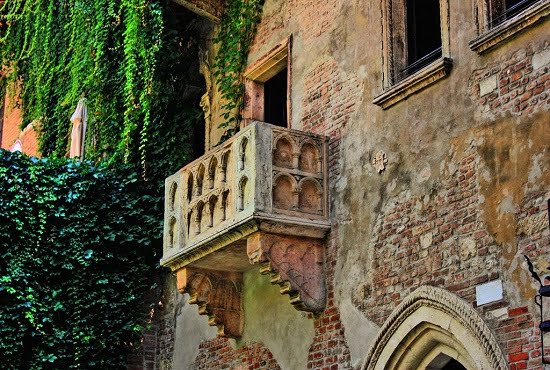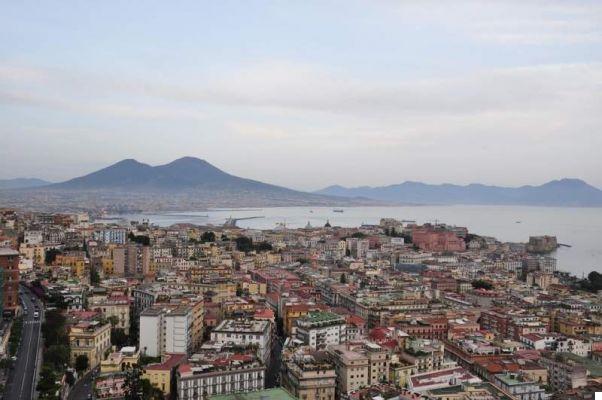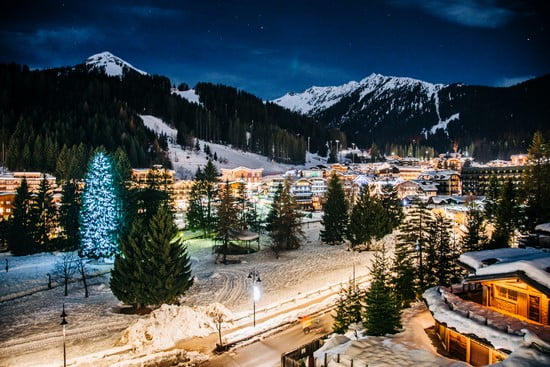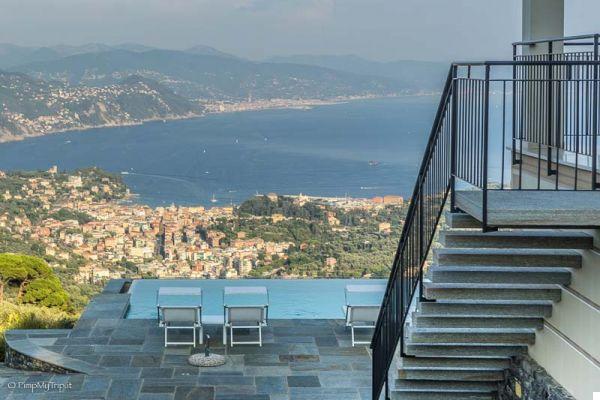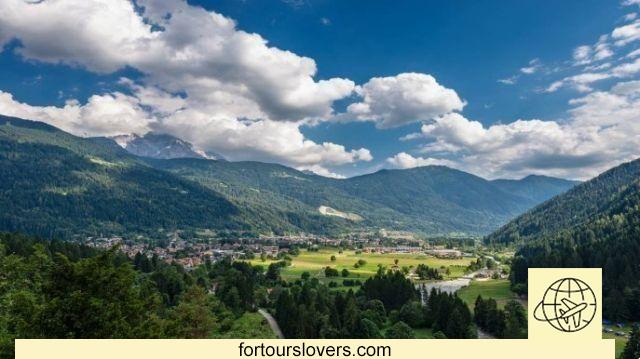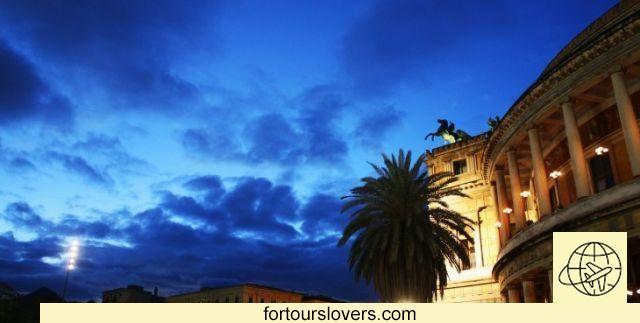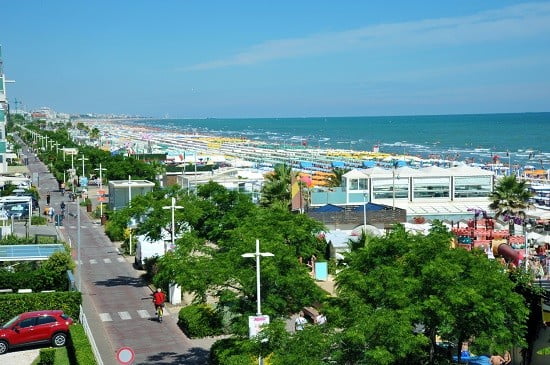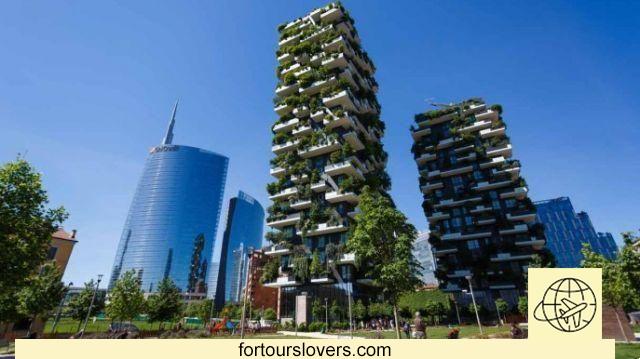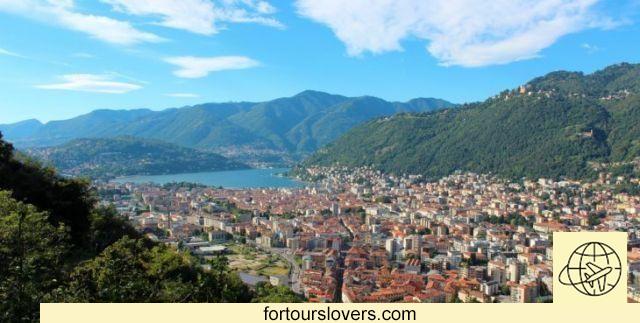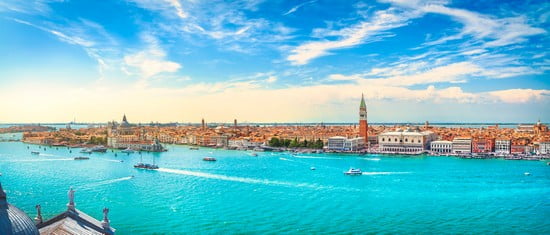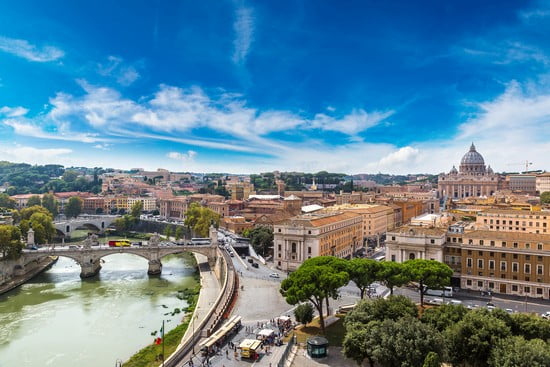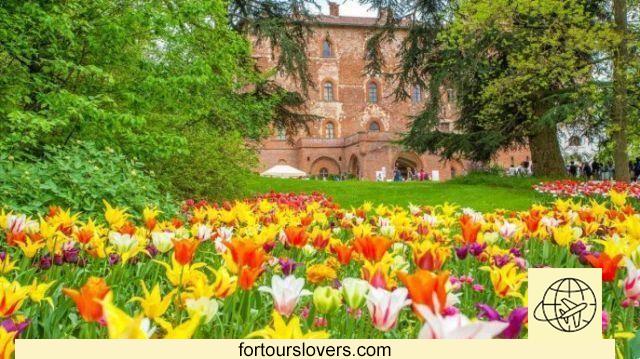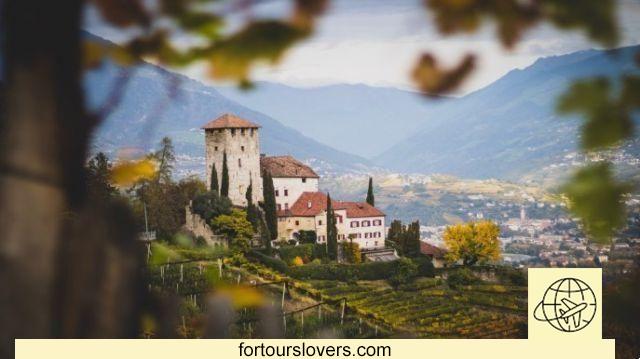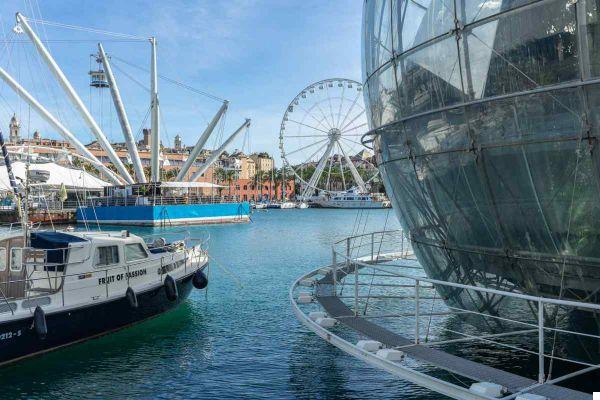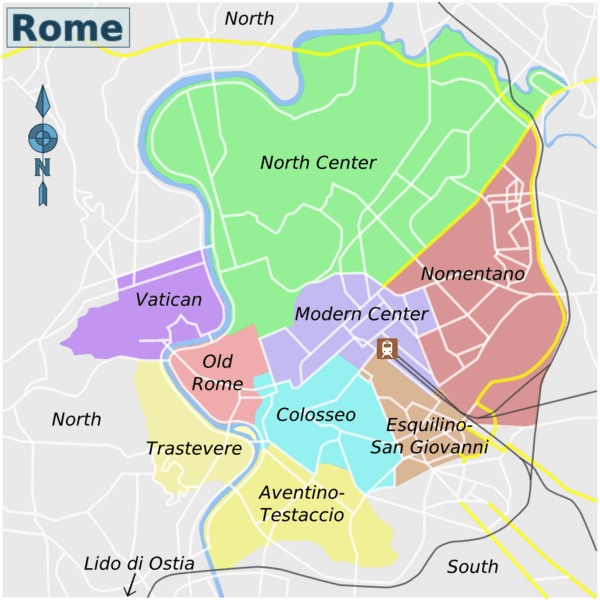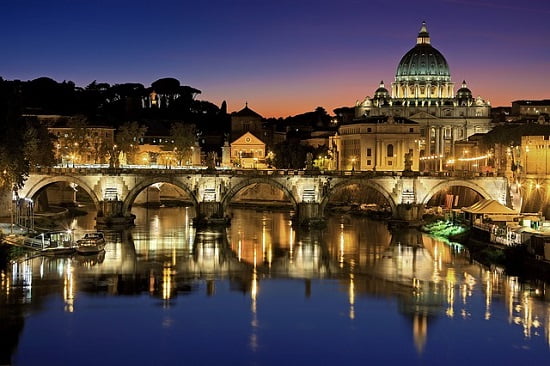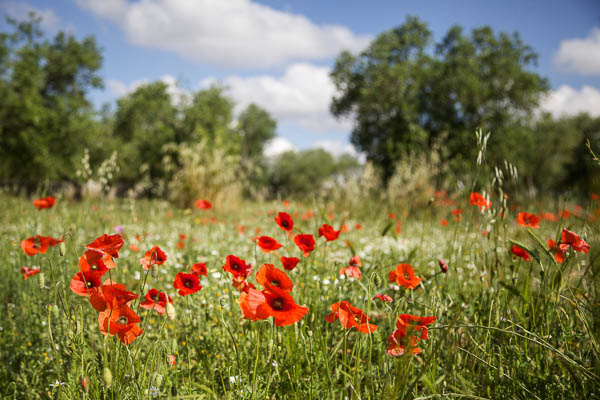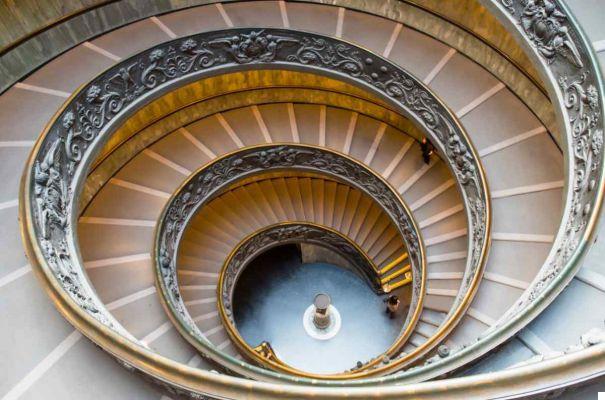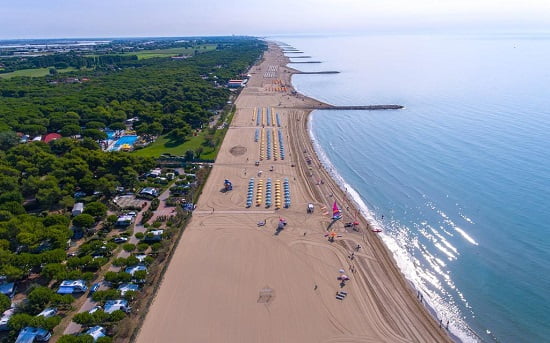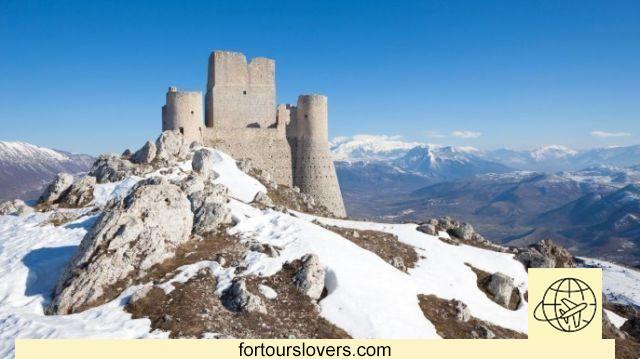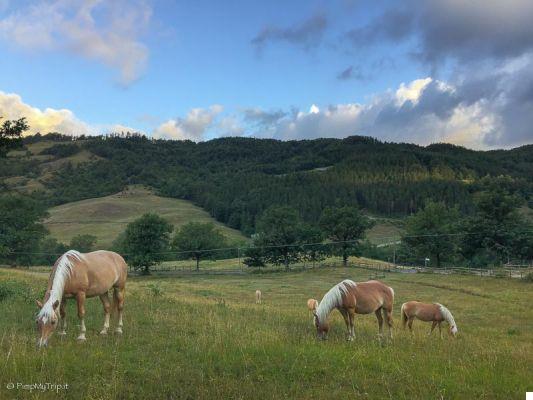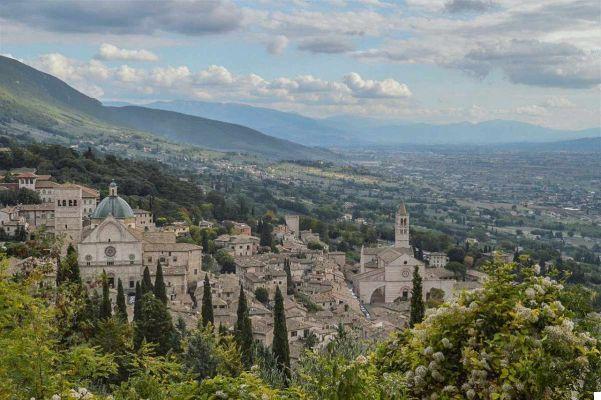Verona is located at the foot of the Alps in the Veneto region, and is considered a historical and aesthetic jewel, one of the most beautiful Italian cities to visit, with so many things to see and do. Its historic center has been declared World Heritage Site by UNESCO.
It is a wonderful city, world famous for the history of Romeo e Giulietta written by the great English playwright William Shakespeare. For this reason Verona is often considered the most romantic city in Italy.
Verona is the second most important artistic city in Veneto, after Venice. Its walls have hosted famous families, such as the Montecchi and the Scaligeri, who contributed a lot to the development of the city, up to how we know it today.
Crossroads of all trade routes, Verona has always been able to provide avant-garde artistic trends. Most of the city it still retains its medieval aspect; but it also retains many Roman elements both in its architecture and in its straight and regular streets.
Furthermore, in his museums and churches the works of art of important local artists, but of international fame, are preserved, such as: Pisanello, Stefano di Verona, Mantegna, Tiziano.
What to see in Verona
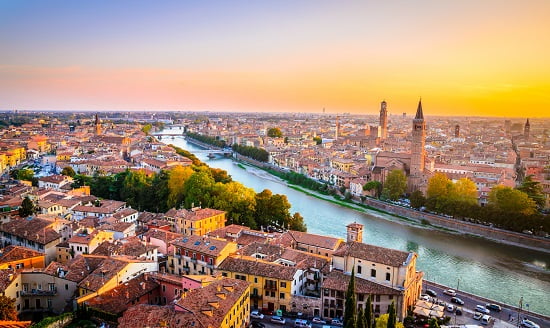
Piazza Bra
The visit of Verona can start from the central Piazza Bra, a large space characterized by buildings from different eras or architectures. Let's see the main buildings:
The Barbieri Palace
And the seat of the municipal administration of Verona. It is a large neoclassical style building that is inspired by the architecture of ancient Roman temples and is distinguished above all by its large columns.
The Great Guard
It is a seventeenth century palace, whose facade consists of a long row of windows and a portico. Its construction was due to the fact that one of the Doges of Venice requested an area where the troops could take refuge in case of bad weather, but due to lack of funds the works stopped and did not continue until 200 years later. Now this building comes used for meetings, exhibitions and conferences.
Doors of the Bra
It is a door composed of two Renaissance arches through which you enter the square on foot or by car.
He Liston
It is a wide pink stone pavement, which follows the shape of the square, and where they are located numerous shops, and especially bars and restaurants with outdoor tables. This is where Verona locals and tourists like to sit down for a drink and relax.
Arena di Verona
The Verona Arena is an ancient Roman amphitheater and the symbol of the city of Verona in the world. This huge theater, which originally had a capacity of 30.000 spectators, is the largest in Italy after Coliseum of Rome e the amphitheater of Capua. At the moment its capacity is lower because an earthquake of 1183 destroyed part of its arches.
Over the centuries, various kinds of shows have been organized here: fights, fairs, dances, circus shows and many others. Today it is used for various musical events thanks to its perfect acoustics.
Giulietta's home
One thing absolutely not to be missed while visiting Verona is undoubtedly the Juliet balcony. His house is located at number 23 in via Cappello, a few tens of meters from the central Piazza delle Erbe.
This house was built in the 12th century and belonged to the Dal Cappello family. In its inner courtyard you will find the splendid bronze statue of Juliet. Many tourists touch the statue's right breast because it is said to bring good luck.
But the real tourist attraction is the balcony from which Juliet looked out to talk to her beloved Romeo. Access to the courtyard is free, but the visit of the house is subject to charges (6 euros). The interiors allow you to appreciate the skilful reconstruction of antique furniture and decorations.
Piazza delle Erbe
Piazza delle Erbe is one of the most special places in Verona, e one of the most beautiful squares in Italy, as it is enriched by splendid palaces, statues, towers and various other architectural elements, such as the fountain with the Madonna of Verona.
For many centuries this square it was the center of the social, economic and religious life of the city. Under the powerful Scaligeri family it became the center of trade and the arts. Let's see the most characteristic parts of the square:
The Palazzo della Ragione and the Torre dei Lamberti
Il Palazzo della Ragione, also known as Palazzo Del Comune, was for centuries the center of the political power of the city.
Next to this building stands the Lamberti Tower, a medieval tower that has become the highest in Verona (84 meters). You can reach its top through the stairs or thanks to an elevator and from there you can enjoy a splendid view of the whole city. The tower is open every day from 8:30 to 19:30 and the entrance costs 6 euros.
The Mazzanti houses
These houses are among the oldest palaces in Verona and are distinguished by their lively frescoes on the facade, which represent scenes of a mythological nature. There were so many houses of this type in Verona at that time, that the city became known as the painted city.
Palazzo Maffei and the Gardello Tower
This is one of the most beautiful buildings in Veronto. Next to it is the Torre del Gardello, which houses inside the oldest bell clock in the city.
Domus mercatorum
La House of the Merchants era la seat of the guilds of arts and crafts. It was built in the Middle Ages for local traders to meet and discuss the economic life of the city of Verona.
Piazza dei Signori
It is located right next to the Piazza delle Erbe and rivals it in beauty. To get there, you have to cross the Arco della Costa, on which a whalebone hangs which served as a sign for an old local shop.
Despite being close together, the two squares differ in their styles: the Piazza delle Erbe is colorful and articulated in different architectures, while the Piazza dei Signori is aristocratic, elegant and closed. The first was the center of political power in Roman times, the second during the rule of the Scaligeri and the Serenissima Republic of Venice.
Arche Scaligere
This is one of the most evocative sites in Verona. It is a small private cemetery, monumental and scenographic, where the Scaligeri, the most powerful family in the city, are buried. The equestrian sculptures inside are beautiful.
Monument to Dante
In the center of the square is the statue of the great writer Dante Alighieri, the author of "The Divine Comedy". During his exile from his hometown, Florence, Dante was hosted in Verona for a long time.
Other important attractions of the square are the Cansignorio Palace, Palazzo Cangrande and Church of Santa Maria Antigua.
House of the Montecchi
It is the home of Romeo's family and is located a few hundred meters from Juliet. The building is a house of medieval origin well preserved, but it is privately owned and the patio cannot be visited due to its fragility.
Via Mazzini
The via Mazzini in Verona is a long narrow street that connects the two main squares of Verona, Piazza Brà and Piazza delle Erbe. This is one of the oldest and most evocative pedestrian streets in Europe, built in the XNUMXth century to connect the two squares.
Known first as via Nuova, it was later dedicated to Giuseppe Mazzini. Today is the central shopping street in Verona, where you can find several shops of national and international brands.
The churches of Verona
The Cathedral of Verona
It is located in the historic center of the city, close to other attractions such as Juliet's House or the Lamberti Tower. AND one of the most beautiful churches, with a harmonious exterior that combines the Romanesque style with the Gothic and a majestic interior. It is possible to visit the interior by paying a ticket of 2,50 euros.
Basilica of San Zeno
The Church of San Zeno is considered one of the best examples of Romanesque style in Italy. Characterized by the large circular rose window and the richly decorated portal of the facade, the church is developed on 3 levels: the crypt in the basement where the body of the saint is kept, the temple in the main level and the presbytery on the second level.
- the church of Santa Anastasia
Dating from the thirteenth and fifteenth centuries, the church of Sant'Anastasia is the largest church in Verona and a magnificent example of Italian Gothic. The multitude of frescoes is impressive; do not miss the fresco of San Giorgio and the princess by Pisanello.
The area of the Roman theater
This area is distinguished by several interesting elements:
The stone bridge
100 meters long, this is it the oldest bridge in the city of Verona (XNUMXst century BC). It was rebuilt several times over the centuries and is distinguished by its imposing and fascinating structure.
The Roman theater
È a very suggestive ancient theater, located at the foot of the hill of San Pietro. It dates back to the XNUMXst century BC and has undergone several renovations. The theater is seat of the Archaeological Museum and every summer it hosts an important festival dedicated to Shakespearean theater.
Giusti Garden
On the other side of the historic center, this garden, considered a masterpiece of the Renaissance landscape, definitely worth a visit. It takes its name from the noble family that took care of it since its opening to the public in 1591.
This is the only one Italian style garden, of the sixteenth century, in the city. It has a large central street of cypresses that divides the garden into two parts: on one side the Italian garden, with flowers, statues and even a labyrinth; on the other, a natural forest.
Castelvecchio of Verona
This fourteenth-century fortress it is superbly well preserved. It can be accessed from the Scaligero Bridge which crosses the Verona river, or the Adige. The structure has had different purposes over the centuries, as well as being the seat of the noble court and a fortress. Today is the seat of the Civic Museum.
The museum has 29 rooms in which an important collection of medieval art is exhibited, including various works of goldsmithing, painting, sculpture and weapons ranging from 1300 to 1700.
Scaliger Bridge
Even if a bridge doesn't seem like a cultural place or a place to discover, the Ponte Scaligero is not like the others. In addition to being a magnificent example of fourteenth-century military engineering, is a true work of art, a historical monument in all respects and today a Site of UNESCO World Heritage Site.
This bridge consisting of battlements and guard posts that crosses the Adige, was designed as continuation of the fortress of Castelvecchio and built with the same red and ocher bricks. A fortified bridge like there are few in the world.
What to do in Verona
Do not miss the Verona Carnival, a particularly popular event that takes place in February or March, and is one of the oldest carnivals in Italy.
The character of Dad of the Gnoco in addition to being the oldest mask in Italy, it is also the King of the Veronese Carnival. He is elected from among the residents every year to march through the streets of the city and lead the parade.
To admire one of the most beautiful viewpoints over the city center, you can take a short walk from the historic center up to Castel San Pietro crossing the Ponte Pietra on the Adige river.
The last weekend of September takes place the Tocatì, the International Street Games Festival, an event dedicated to past activities.
During the winter holidays one of the most beautiful experiences to do is the visit of the characteristic Christmas markets.
What to see in the surroundings
The visit of the Lake Garda or of the many amusement parks present in the area, including Gardaland, the largest and most famous amusement park in Italy. Located about 30 km from Verona, it can be reached by car, but also by train, as it is very well connected.
For mountain lovers it is possible to organize an excursion on the Monte Baldo.
